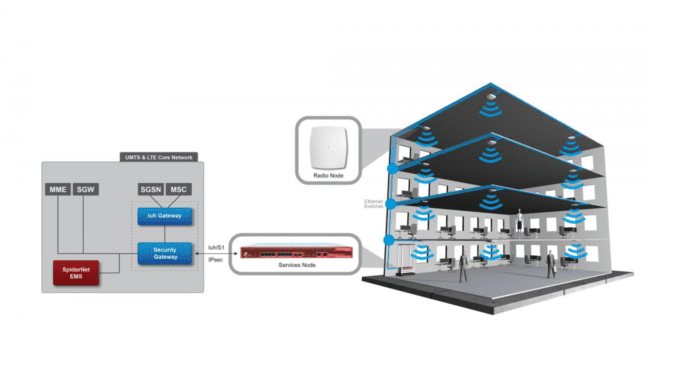New small cells products are focused on providing flexibility in spectrum, both licensed and unlicensed, options for enterprise
Last week SpiderCloud Wireless, which targets carriers and enterprises with its small cells platform, broadened its product portfolio with two new units designed to enable greater flexibility for in-building wireless connectivity. The two new releases include a “frequency agile” small cell and a small cell that supports LTE-U.
The so-called Frequency Agile small cell supports major U.S. LTE bands including 2, 4, 12, 13, 25 and 66, which covers frequencies from 700 MHz to 1`00 MHz. The new product fits into SpiderCloud’s Enterprise-RAN architecture, which is a services node controlling up to 100 self-organizing small cells. The E-RAN solution can provide coverage for up to a 1.5-million-square-foot building, according to the manufacturer.
The new LTE-U small cell, also supported by the E-RAN platform, is software upgradable to Licensed Assisted Access (LAA) and supports up to 64 active LTE users. An onboard Wi-Fi baseband chip “maxmize[s] SON benefits and co-existence with other Wi-Fi or LTE-U/LAA devices.
SpiderCloud Director of Enterprise Services and Technologies Art King explained to RCR Wireless News, “LTE-U has a method to allocate network time slot to itself, regardless of activity occurring in the Wi-Fi systems in the same unlicensed spectrum. With the software upgrade to LAA, the system supports listen-before-talk, King said, “so LTE is polite and accesses the network without stomping on Wi-Fi transmissions. This is why LTE-U is limited to a few countries, but LTE-LAA is globally acceptable as many spectrum regulators required systems operating in unlicensed spectrum to implement LBT so they co-exist peacefully.”
In a December blog post, SpiderCloud VP of Marketing and Product Management Amit Jain framed LAA small cells as a way for enterprise IT departments to take a burden off of Wi-Fi systems. “Adding a relatively small number of small cells from just one major operator can take 30-40% of smartphones off your Wi-Fi network. This reduction makes the difference between whether you need to upgrade your Wi-Fi network this year or not.”

